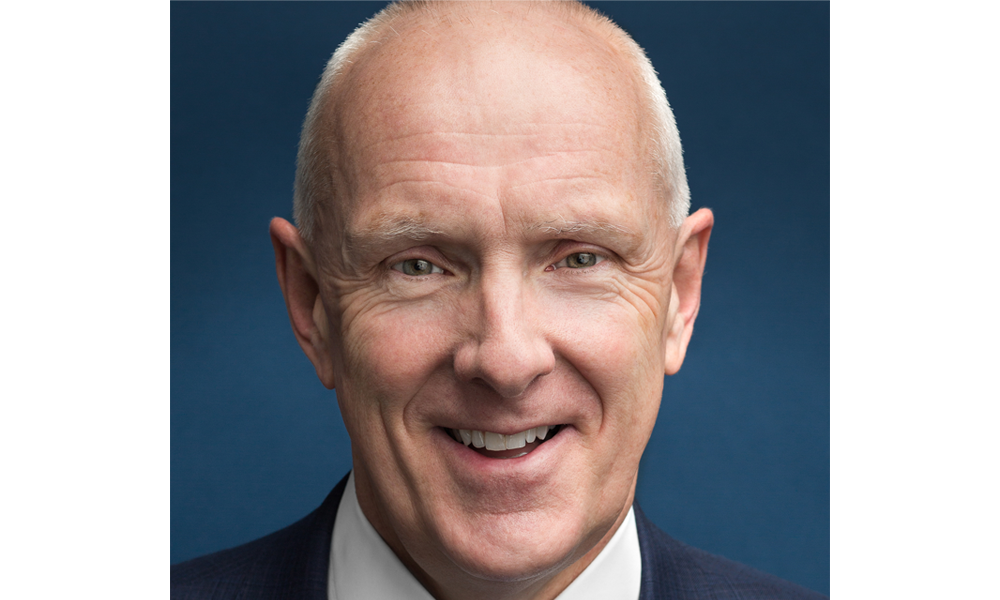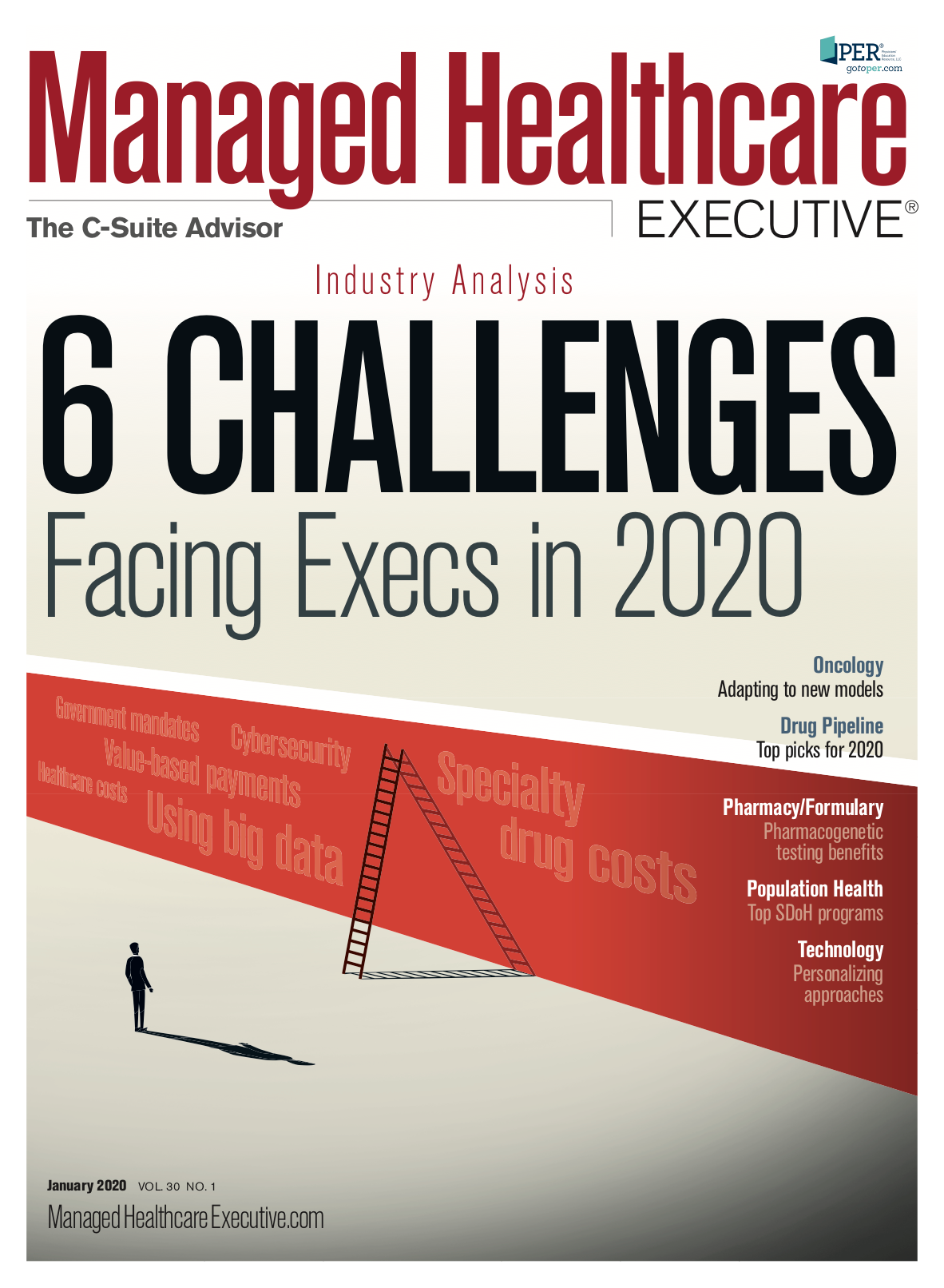Featured Exec: Warner Thomas, President and CEO at Ochsner Health System
Leadership skills honed in midst of disaster.

Hurricane Katrina hit the New Orleans area on August 29, 2005, with such ferocity that half the city’s residents were displaced. The storm’s more than 100 mile-per-hour winds damaged or destroyed homes and businesses. But New Orleans’ residents are resilient, and city leaders were committed to rebuilding the city.
Warner Thomas, CEO and president of New Orleans-based Ochsner Health System, Louisiana’s largest nonprofit, academic health system, had a healthcare organization to run. Pre-Hurricane Katrina, his strategy to keep the health system operational involved creating a Team A and a Team B.
When the hurricane hit, Team A would be on scene to run the health system during the storm, and Team B would take over health system operations post-Hurricane Katrina.
Timely, regular communication is key
To keep in synch with his leadership team during and after the hurricane, Thomas had scheduled check-ins every morning, late afternoon, and evening. The goal? Get all hands on deck and focus on the work of keeping the health systems’ doors open, while treating patients and supporting staff members.
Post-Hurricane Katrina, many of Ochsner Health System’s staff members didn’t have homes to return to at the end of the workday. The storm had damaged 70% of the city’s occupied housing units, according toCNN. In addition, other hospitals in the area had sustained damage in the storm. Ochsner Health System ultimately acquired three hospitals from Tenant Healthcare Corporation after Hurricane Katrina hit New Orleans.
Related: Pre-disaster Collaboration Key to Community Resilience
Lisa Goldstein, associate managing director at Moody’s Investor Service and a nonprofit hospital analyst, toldCNBC, “It was a market that…went from over 2,000 hospital beds, to-shortly after Katrina-just 500.”
In the best of times, hospital mergers are difficult. The three hospitals Ochsner Health System acquired from Tenant Healthcare had different systems and cultures-that’s typical with hospital mergers. But this was the worst of times: Medical records had been destroyed, in addition to physical structures-and the staff at the new hospitals were also struggling with housing and uncertain about the future of the city and the surrounding area.
Thomas acknowledges that recovery efforts after Hurricane Katrina-in addition to the hospital mergers-were challenging. Clear and ongoing communication among his leadership team and throughout the health system was pivotal to Ochsner Health System’s success.
Solving New Orleans’ toughest challenges
Thomas continues to apply the hard-earned lessons he learned during Hurricane Katrina and the city’s recovery. He kicks off each workday with a 15-minute check-in call with the 12 members of his leadership team. It’s an opportunity to focus on the most pressing challenges of the day, which can range from a public relations issue to a drug shortage, he says.
Ochsner Health System grapples with many of the same challenges facing any multi-hospital health system. For example, 13%-or more than 521,000 of the state’s residents-have diabetes, according to the American Diabetes Association. More than a million people in the state have prediabetes, which means their blood glucose levels are higher than normal but not yet high enough to be diagnosed as diabetes.
In addition, rates of heart disease and stroke were 25% higher in Louisiana than the U.S. average in 2017, and the percentage of adults who are obese increased from 35.5% in 2016 to 36.2% in 2017, according to the Louisiana Department of Public Health.
To support community members in tackling these chronic conditions, in 2014, Ochsner Health System launched the O Bar, retail locations where patients and non-patients can purchase items such as activity monitors, wireless blood pressure monitors, and weighing scales. Technology specialists staff the O Bar locations, which means shoppers have help choosing the right digital health app and troubleshooting technical and support issues.
Aimee Quirk, CEO of innovationOchsner, an innovation lab and accelerator founded by the health system, says, “This is a really powerful way to help address some of the access issues and disparities we see.”
She acknowledged that the acute care model is changing-and that’s due in large part to payment incentives ushered in by value-based care. Today, there are seven O Bar locations at health system facilities, and a mobile O Bar travels to locations around the state.
Encouraging staff members to maintain their focus on both the digital and “bricks and mortar” aspects of healthcare isn’t easy, Thomas admits. Supporting team members to work “outside their ‘silos’” helps, he says.
Thomas stresses that it’s about motivating all team members to embrace a “both/and” philosophy. For Ochsner Health System, that requires a commitment to delivering clinical care in its hospitals and physician practices, in addition to providing the expertise patients need when they call an O Bar expert to learn about a new digital health device.
Mapping his journey to New Orleans
Thomas, a Vermont native, started his career as an auditor at consulting firm Ernst & Young. Many of his clients were in the healthcare ecosytem, including community and tertiary hospitals, physician groups, and healthcare systems throughout New England. That’s what drove his decision to work at Nashua-based Southern New Hampshire Health, where he rose through the leadership ranks as controller/director of finance; interim chief financial officer; president of Foundation Medical Partners, Inc, a medical group practice that’s part of Southern New Hampshire Health; and vice president of managed care and network development.
One of his successes at Southern New Hampshire Health was the expansion of a multi-specialty physician group to nearly 100 providers in six years; the physician group included 20 locations, 200 staff employees, and more than $30 million in net revenue.
In fact, Thomas hadn’t visited the Bayou State until he interviewed for a job at Ochsner Health System. An ongoing thread in his career-and one that carries through his current role as a health system president and CEO-is his belief that healthcare is about helping people improve their lives.
In his capacity as Ochsner Health System’s president and CEO, Thomas is responsible for strategy, operations, and growth. Due to his efforts, the health system has expanded across Louisiana and the Gulf South. He’ll continue to have his work cut out for him; patient-centered technology will be pivotal to bringing advanced care closer to patients’ homes, which is important in a state where 750,000 residents live in rural areas.
What helps keep him focused during the inevitably stressful days of running a health system? Daily exercise, such as swimming. “Exercise is a critical part of my routine. It helps me stay sharp and is a great stress reliever,” says Thomas, who has participated in triathlons and Ironman competitions. “To keep an active mind, you have to keep an active body.”
Aine Cryts is a writer based in Boston.

Extending the Capabilities of the EHR Through Automation
August 2nd 2023Welcome back to another episode of "Tuning In to the C-Suite," where Briana Contreras, an editor of Managed Healthcare Executive, had the pleasure of chatting with Cindy Gaines, chief clinical transformation officer at Lumeon.
Listen